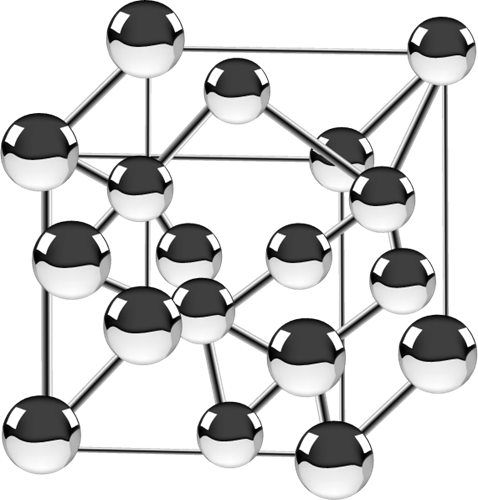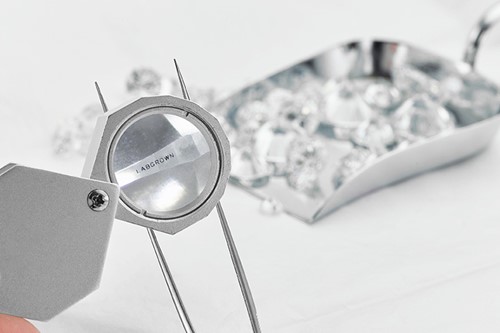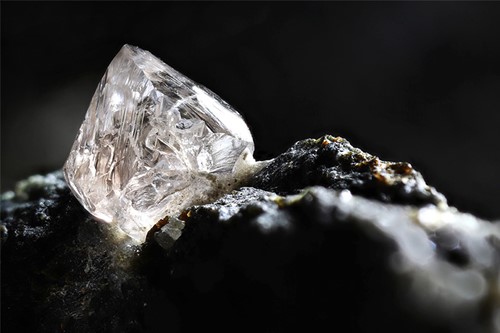As a retailer, when selling lab grown diamonds you have to be able to disclose all the facts about them in order to help your customer make an informed purchase, and avoid risking your business in the long run.
Here are a few key points that you should be conveying to your clients in regard to lab grown diamonds and their difference from natural diamonds.

Identical Carbon Structure
Lab Grown diamonds have the identical carbon structure to natural diamonds. Lab grown diamonds are made from a natural diamond seed in a laboratory with equipment that replicates nature’s harsh conditions that resulted in the formation of natural diamonds billion years ago (heat and pressure).
Lab grown diamonds can be duplicated to have the exact same characteristics as natural, however it’s important to inform your customers though that with natural diamonds, no two diamonds are the same. Even when having identical color, clarity and carat grade, still the type of inclusion acts like a fingerprint and differentiates one diamond from another. In contrast, growing two diamonds at the same time in a lab, results in creating identical diamonds with identical fingerprints.

Price and Value
Rarity and scarcity mean shortage of supply in comparison to demand. Usually, the supply in these cases cannot increase to meet the demand due to limitations, like nature, and therefore the value rises and the item becomes valuable. There are finite resources that can produce natural diamonds which have formed over billion years ago. The relative limited supply of natural diamonds explains its value based on rarity. This is especially true for better quality diamonds (higher colors and clarities and fewer flaws).
Since lab grown diamonds are mass produced and there is no shortage of supply, they do not have the rarity factor which determines the price of natural diamonds and results in the much lower prices of lab grown diamonds (which are getting lower all the time) compared to natural diamonds. This is an essential difference between natural and lab grown diamonds and should be disclosed to customers.

Lab grown diamonds have no limits to their source of production, which removes the factor of rarity and uniqueness that gives natural diamonds their value. It is your responsibility to make it crystal clear from the beginning that there won’t be a price increase in coming years and there is no resale value for lab grown diamonds. With technology advances, the price of lab grown diamonds will fall even further as the cost of producing them will decrease.
It is wise to advise your client that return on investment for lab grown diamond is zero or even negative and sellers do not accept returns or offer buy-back opportunities as they do for natural diamonds
Carat size
In the short term, buying a lab grown diamond could have a certain type of value for Consumers, and that is related to the carat size of the diamond. Purchasing a larger stone for a fraction of the price can be a lucrative option for many, but again, it needs to be emphasized that in the long term the price and value (if any) is only going to decline.
Ethically sourced and eco-friendly option
Many buyers, especially GenZ’s are increasingly concerned about buying ‘ethically sourced’ and ‘eco-friendly’ products. Many lab grown diamonds are grown in countries with a high reliance on fossil fuels to provide the tremendous amount of electricity it takes to power the machines that make lab grown diamonds. Using fossil fuels to grow diamonds in a laboratory has a damaging impact on environment. While some lab grown diamond producers use reusable sources of energy, the damaging impact on environment of many other remains problematic for that industry.

In addition, similar to any other factory (especially fast fashion), there is often poor working conditions in developing countries that are mass producing lab grown diamonds. These workplace conditions in lab grown factories raise questions in regard to their ethically sourced claims.
One factor that is often overlooked by consumers is the mining towns and communities that survive and thrive around natural diamond mines. Natural diamonds are often mined in the poorest countries in the world. There are initiatives and corporate policies in place by diamond mines to protect and preserve wildlife, land reclamation and giving back to communities and countries with such rich natural resources. Building schools, hospitals and farms are just a small portion of their giving back to the community. Creating jobs by employing locals at the mines and assisting artisanal miners to be independent and carry out small scale mining are part of empowering sustainable communities. Consumers should be aware that buying a natural diamond would support investing in communities surrounding natural diamond mines and preserving natural resources.
In conclusion, it is advisable to lay the facts out there for your customers and avoid greenwashing lab grown diamonds as the more socially responsible choice.
Given the differences in value and value retention as well as the competing claims for social responsibility between natural and lab grown diamonds, it’s important for you to disclose all the facts to your clients. Educating and informing your customers will protect your business from future claims and gain their trust and loyalty regardless of their decision to purchase natural or Lab Grown diamonds.


 RapNet Blog
RapNet Blog
![Diamonds 6[1][1]](/media/2120/diamonds-6-1-1.png)